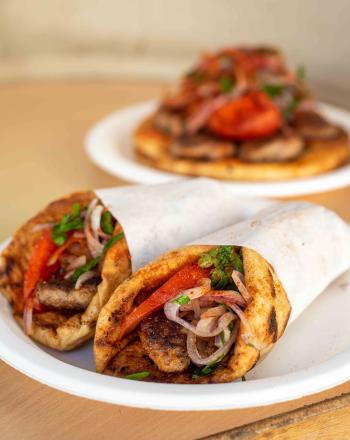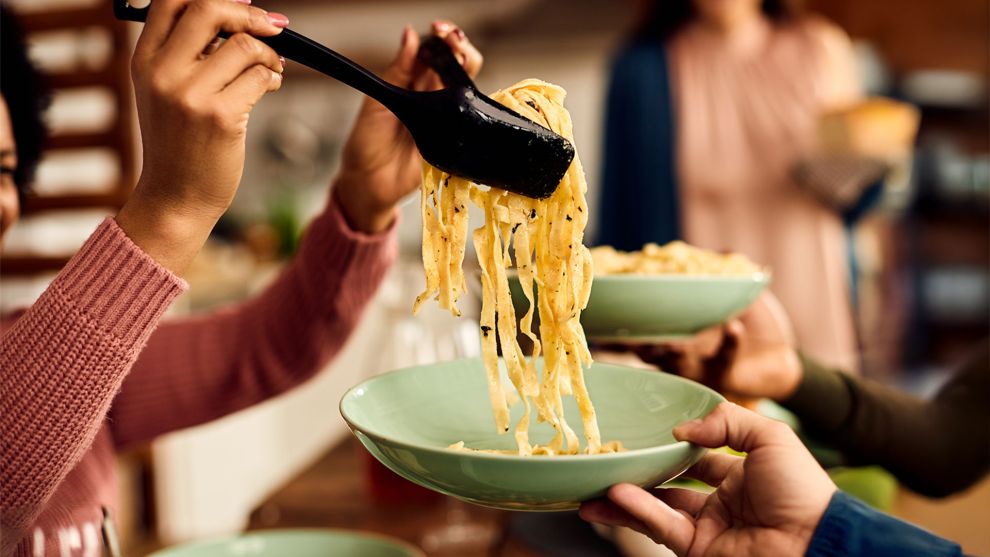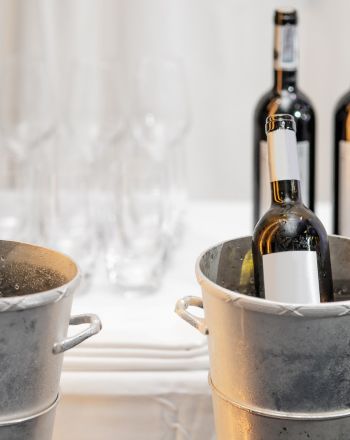
Everyone loves pasta, and it may seem simple to prepare at home, but it also requires mastery. Even small details, which you might not think are important, can make a significant difference in the result. Here’s everything you need to know:
Types of pasta
The variety is huge, but we can divide them into basic categories:
- Fresh: Soft, slightly liquid, usually contain egg (tagliatelle, ravioli, fettuccine)
- Dried: Hard, shelf-stable, ideal for spaghetti, penne, rigatoni
- With egg: Richer flavor, more delicate texture
- Without egg: Traditionally made with just flour and water (orecchiette, trofie)
- Stuffed: Ravioli, tortellini, agnolotti – with fillings of cheese, vegetables, meat, or fish
- Short pasta: Used mainly in soups (orzo, stelline, ditalini)
Each shape has a purpose: some hold the sauce better, some give a bite, some fill the plate with aroma. In Italy, each city has its own signature: orecchiette in Bari, pici in Tuscany, trofie with pesto in Genoa, and tortellini in Bologna. Southern pasta tends to be rougher and more handmade, while northern pasta is thinner and richer (often with eggs).\

Which sauce goes with which pasta?
- Long pasta (spaghetti, linguine, tagliatelle, fettuccine): Light, oily sauces or velvety ones with cream/butter, lemony or aromatic sauces. Example: spaghetti aglio e olio, carbonara, cacio e pepe, alle vongole.
- Short and hollow pasta (penne, rigatoni, sedè, farfalle): Chunky sauces like minced meat, vegetables, tomato-based sauces, ragù, bolognese. Their hollow shape and ribs catch the sauce in every bite.
- Stuffed pasta (ravioli, tortellini, agnolotti): Simple sauces that don’t overshadow the filling: butter and sage, cream with parmesan, or cherry tomatoes with olive oil. The sauce should accompany the pasta, not dominate it.
- Twisted pasta (fusilli, trofie, cazarezza): Thick, dense sauces such as pesto, ragu, or vegetable-rich sauces. Their twists trap the sauce.
- Lasagna / cannelloni / baked pasta: Layered sauces like Bolognese with béchamel, pumpkin, or spinach-ricotta. The sauce should be thick, not watery.
Tip: The thinner the pasta → the lighter the sauce. The coarser and thicker → the richer and fuller the sauce.
Salt and water
Italian chefs say: “The water for pasta should be salty like the sea.” For every liter of water, add about 10–12 g (1 heaped tbsp) of salt. Add it as soon as the water boils, before adding the pasta. Do not add oil - it prevents the sauce from sticking.

Serving correctly
A few touches transform a simple dish into a fine dining experience. A serving tong helps “tower” long pasta beautifully. Stuffed pasta can be arranged in rows or layers with sauce on top.
Serve with freshly ground pepper, lemon zest, grated parmesan, or a sprinkle of parsley or basil. The secret is to serve your food with the same care you used in cooking it!
Wine pairing
- Tomato dishes → light red wine (Chianti, Pinot Noir)
- Cream or butter dishes → white (Chardonnay, Pinot Grigio)
- Seafood → Prosecco or dry rosé
- Vegan/vegetables → white wine or light beer
Cheese: when, how, and how much
Cheese is not just a garnish - it’s a key flavor enhancer. It binds ingredients, adds texture, balances acidity, and enriches sauces.
TIP: Many Italian recipes avoid cheese in seafood dishes - not for taste, but for traditional aesthetics and balance (although this is not an unbreakable rule!).
The amount of cheese is also important: it’s not “the more, the better.” For delicate sauces, a little is enough; the cheese should not overpower other ingredients. For baked dishes (al forno), cheese can be used more generously—it helps bind the ingredients and creates a delicious crust.
Golden rules:
- Pecorino Romano → cacio e pepe, gricia, amatriciana
- Parmigiano Reggiano → almost anything, from ragù to risotto
- Grana Padano → milder, gentle flavor
- Ricotta salata → pasta alla Norma
- Mozzarella/Provola → melts beautifully in baked dishes
- Gorgonzola → cream sauces with walnuts or pear
Never add cheese to hot oil (e.g., aglio e olio) as it can stick or clump. Stir cheese into the pasta, not just on top, to create a creamy coating with the starchy pasta water.

Saving pasta water
Reserve about 100 ml (½ cup) of cooking water before draining—it contains starch that helps the sauce stick and thicken. Add gradually while stirring until the desired texture is reached. This is especially useful for dishes without cream or butter.
Portions:
- Dry pasta: 75–100 g per person
- Fresh pasta: 100–125 g per person
- Soups or light first courses: 60–75 g
- Main courses: 90–100 g (or slightly more for hearty eaters)
Leftovers
Store cooked pasta separately from the sauce if possible. If already mixed, add a little olive oil to prevent sticking. Reheat gently in a saucepan with 1–2 tbsp water or milk; avoid microwaves to prevent sogginess.




